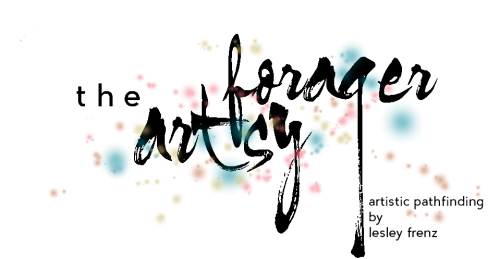Hi Artsies! I’m taking a tiny break for a few days, while we visit with some dear friends from Florida. Please welcome fellow art lover and blogger, Kaitlyn Patience, who blogs and creates gorgeous stationery over at isavirtue!
Hello, my name is Kaitlyn! I am the author of art and snail mail blog “isavirtue.” I will be guest posting today on Artsy Forager.Last summer, Lesley wrote an excellent two-part blog post entitled “Yes, Virginia, You CAN Afford To Buy Artwork!” Aside from being the best title in the history of all blog posts, these two guides are an excellent resource to both online and offline art purchases. If you are looking for even more resources, I provide a similar post on my blog, listing a variety of art sale websites. Lesley’s belief that art collecting is not just for the wealthy and the learned connoisseurs is one that we both share. I believe art is, and should be, available to everyone.That being said, there is certainly an intimidation factor involved. This fear of art may stem from its perceived value, or a lack of knowledge. The first concern is an easy one to strike down. Art is affordable. You can take my word for it, or you can peruse the aforementioned guides. No matter what your budget is, you will be able to find art that you love.The second issue, a lack of knowledge about art is one shared by many. To be honest, I don’t believe you have to have any knowledge at all. If you like it, and can afford it, then buy it! That being said, if you want to know more, I’m happy to share with you a mini tutorial on the types of art available for home décor (Sorry, you generally can’t buy installation art, performance art or public art!).The following information is a simplified version of what is offered in my online e-course, “make art a part (of your life).” I encourage you to read more about the course here (LINK: http://blog.isavirtue.net/p/e-course-registration.html) – it’s great fun and you can enjoy it at your own pace!
“There’s a ninety-nine percent chance you already have some version of art in your home, whether it be a cool print you found, a little DIY, your children’s artwork, or one of those hip new canvas transfers. I’m hoping you feel so inspired by reading this that you are anxious to rush out get some more art to decorate your home! But what type of art will you buy? Is it important to you that it be “original”? What’s the cheapest way to go about this? What is the difference between a regular print and a limited edition? How do you know you aren’t over-paying?”
Goodness me, you have so many questions! First, let’s look at the different types of art available.
Limited Editions | A limited edition work of art is the next notch down on the value scale. This is because while there are multiples of the art, the number is restricted. A limited run of art prints for example, may include anywhere from two hundred to one thousand pieces. However, any more than two hundred and the term “limited edition” is being stretched.
Canvas Transfers | A photograph, poster or print that is taken and laid on canvas through chemical or heat transfer. The canvas is then tightly wrapped around a wooden frame to look like a gallery style painting. It’s brilliant because it lets people purchase art for their home at really reasonable prices.
Regular Prints | Any paper print made from a drawing, original painting, photograph etc. There is no inherent value, except to you because you love it!
Posters | Printed on papers of varying thickness, posters can be memorabilia, advertisements or simple decorative images. People love to collect posters because they are the least expensive form of art and can be hung framed or unframed.
Import | While not always imported, the term is used to reference three dimensional art which includes foreign objects, replicas or mass produced goods. They often include wall art and freestanding sculptures.
I hope you have enjoyed this little lesson and that it will help you in your search for beautiful art!













